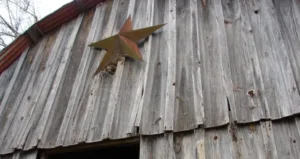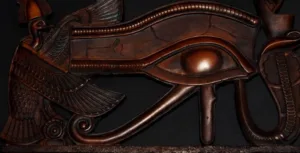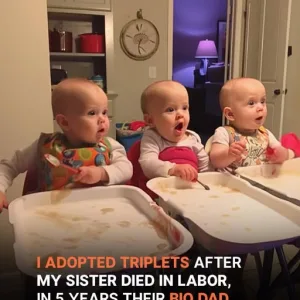Barn stars, often adorning the doors of rustic barns, are not just charming ornaments but bear deep cultural significance. These stars can be found painted on, crafted from metal, or sometimes replaced by hex signs or quilt squares. Yet, the meanings and purposes behind these rustic decorations might pleasantly surprise you.

For German-American farmers, barn stars hold great importance. They perch these stars atop their barns to ward off malevolent forces and usher in prosperity for their crops. Interestingly, each barn star carries a unique significance and may even vary in color.
A green barn star, for instance, signifies fertility and robust crop growth. Blue or black stars represent protective auras over the farmer, their household, and the crops. Meanwhile, brown barn stars symbolize friendship. The tradition of barn stars finds its roots within the Pennsylvania Dutch and Amish communities, each emblem tracing its lineage back to European German folk art.

This tradition of barn stars, along with numerous other regional customs, has been lovingly passed down through generations. It’s crucial to understand that barn stars and hex signs are separate yet intertwined traditions.
Patrick Donmoyer, overseeing the Pennsylvania German Cultural Heritage Centre at Kutztown University, sheds light on the history. Hex signs, which also found their way into various places such as marriage licenses and grave markers, were initially intended to bestow luck upon newlyweds and provide solace for the departed in the afterlife. Surprisingly, barn stars did not carry the same supernatural connotations.
Barn stars were not initially associated with otherworldly beliefs; rather, they were an integral part of the agricultural way of life. Hex signs, inspired by barn stars, surfaced almost a century later.
In the 1920s, artist Wallace Nutting misunderstood and creatively reinterpreted the original quilt squares and barn stars, birthing the hex signs. These symbols later experienced a resurgence in the 1950s, evolving into a popular tourist attraction.
The presence of barn stars and quilt squares on barns throughout Pennsylvania Dutch country is a testament to the culture, customs, and ingenuity of a community that has long captivated mainstream society. These symbols serve as not only protectors against malevolence but also as decorative tributes to their forebears.

Much like barn stars, cultures worldwide possess their own ancient symbols, adapted to fend off negative influences, safeguard homes and families, and usher in prosperity. Regardless of their diverse names and meanings, these symbols connect us to the wishes of our ancestors for the well-being and prosperity of our families and communities.





